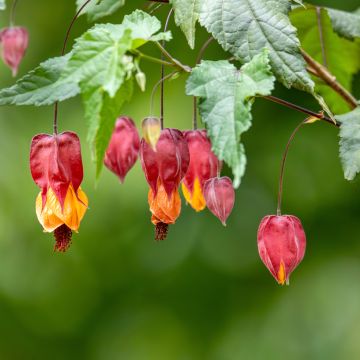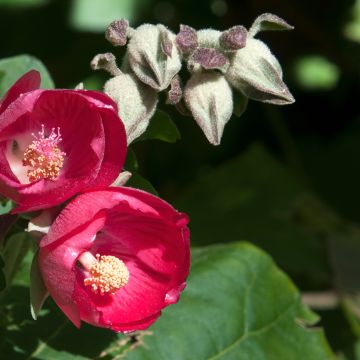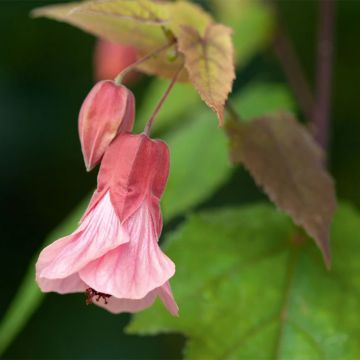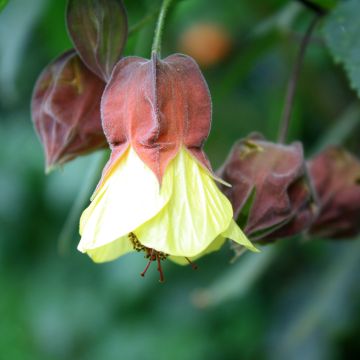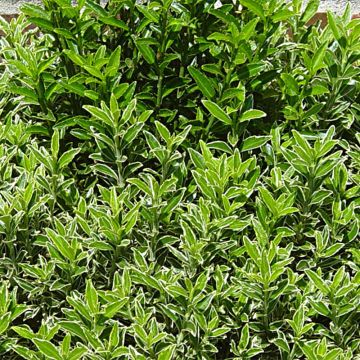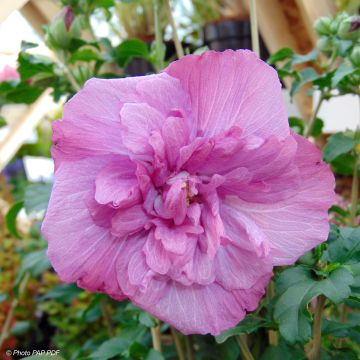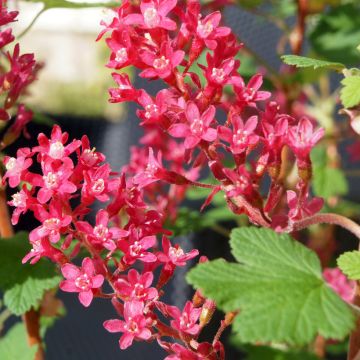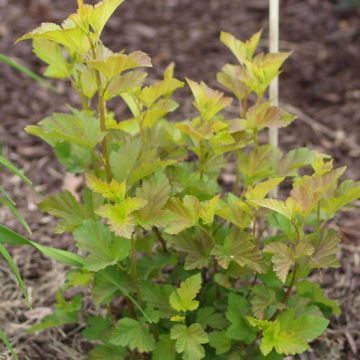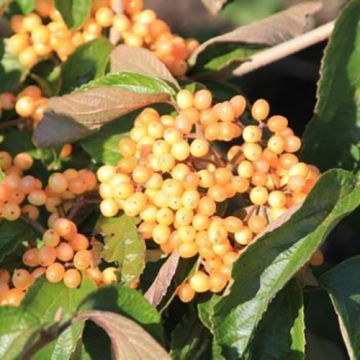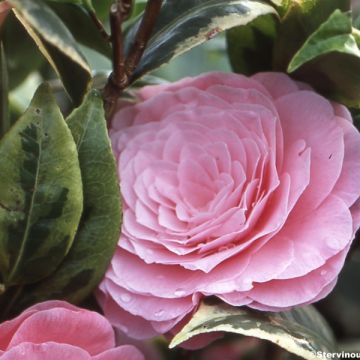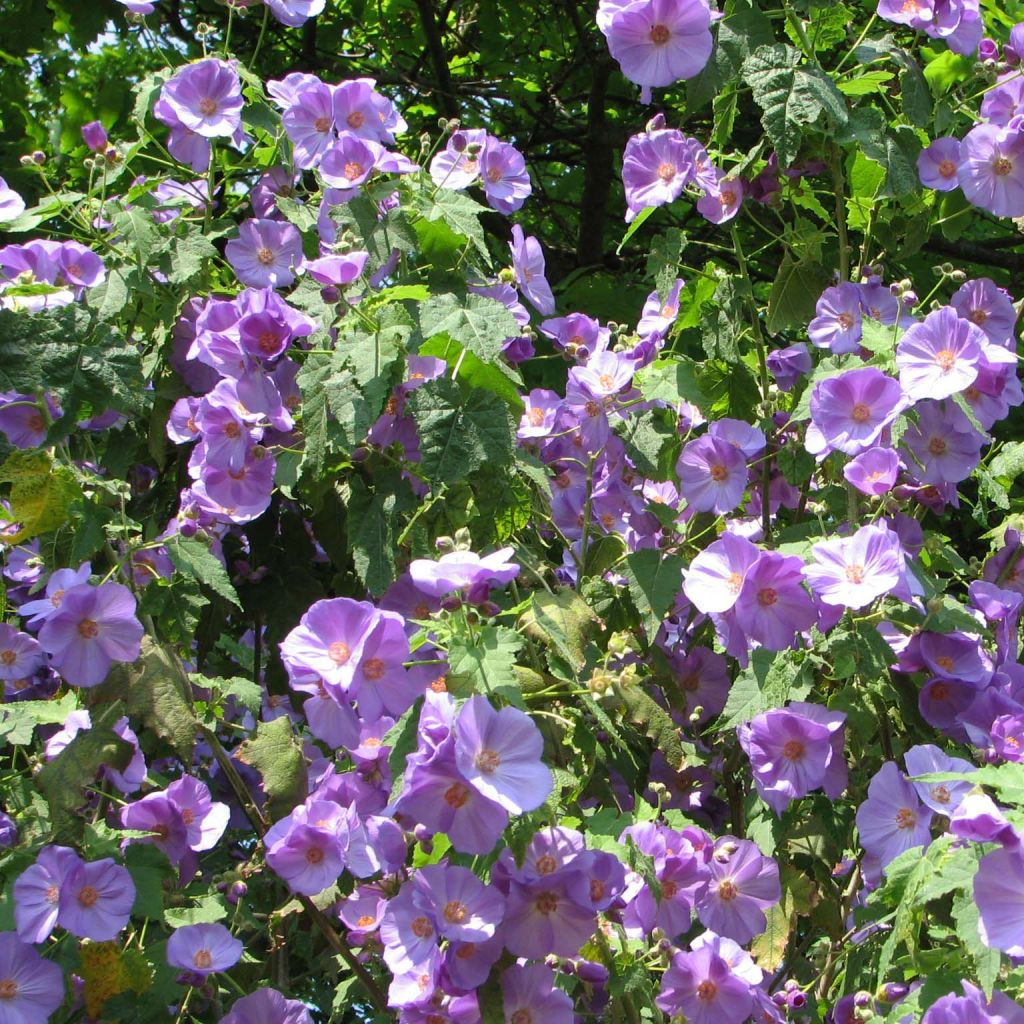

Abulilon suntense


Abulilon suntense
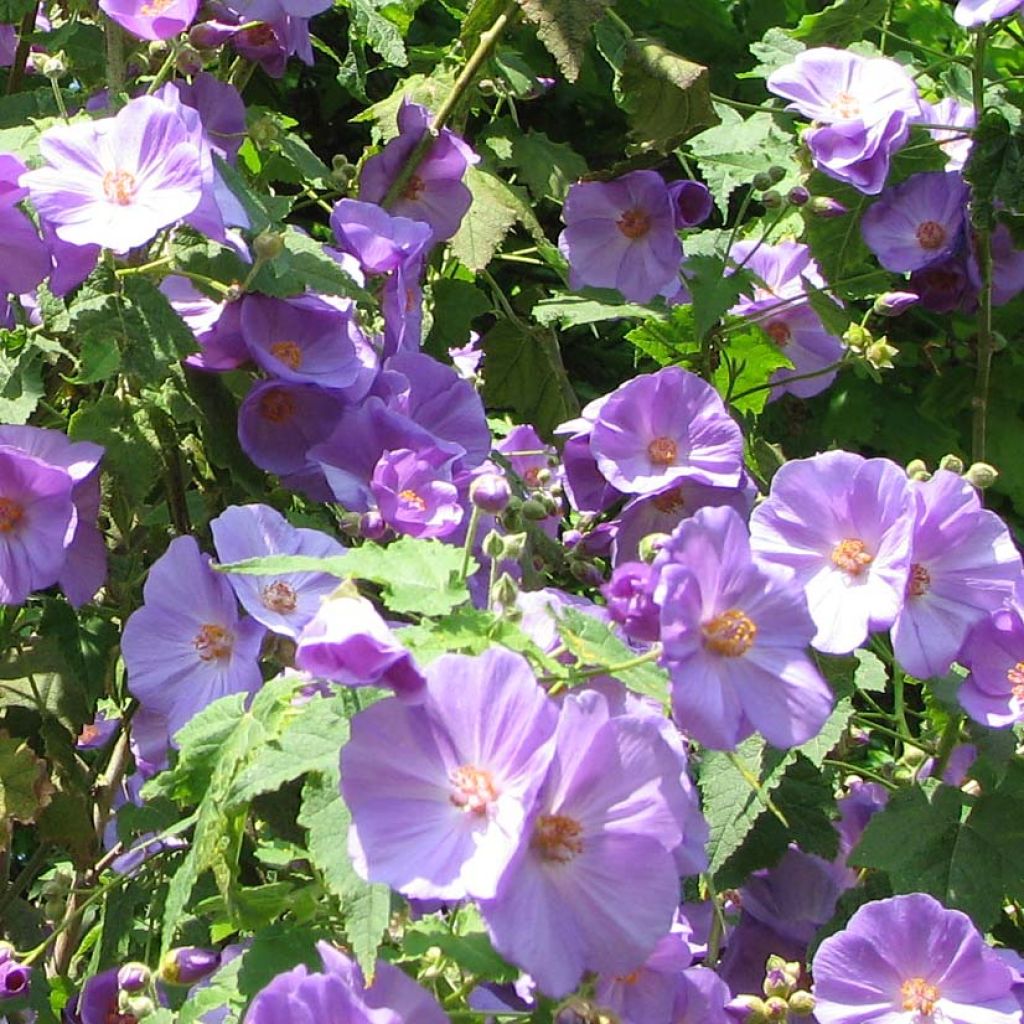

Abulilon suntense
Abulilon suntense
Abulilon vitifolium x ochsenii Suntense
Gorer's mallow
Superbe young plant, has recovered well... has even grown 50 cm (20in) this summer. Very satisfied, and it also produces lovely flowers.
Frederique, 26/09/2020
Why not try an alternative variety in stock?
View all →This plant carries a 24 months recovery warranty
More information
We guarantee the quality of our plants for a full growing cycle, and will replace at our expense any plant that fails to recover under normal climatic and planting conditions.
From €5.90 for pickup delivery and €6.90 for home delivery
Express home delivery from €8.90.
Does this plant fit my garden?
Set up your Plantfit profile →
Description
The Abutilon 'Suntense' is a hardy bush with beautiful vigour and spectacular flowering in late spring. In May-June, it offers a profusion of large cup-shaped flowers, with a particularly bright mauve colour. They bloom with ample foliage of beautiful dark green-grey, lobed and mostly evergreen. Hardy down to -5°C (23°F) without protection, and even more in a sheltered location. This abutilon is not the most well-known, but it is one of the most attractive and hardy. It thrives in full sun or partial shade, in well-drained soil, and can tolerate the occasional lack of water in summer. It can also be grown in a large pot in cold climates, to be stored indoors during winter.
The Abutilon 'Suntense' is a horticultural creation resulting from the cross-breeding between Abutilon vitifolium, a large species native to Chile, and A. ochsenii, its close cousin native to southern and colder regions. In cultivation the average dimensions of this variety will reach 2.75m (9ft) in height and 2.25m (7.38 ft) in width, with rapid growth. Its lifespan is relatively long, especially if faded flowers are removed to prevent seed production. In spring, pendulous flowers appear on young branches, carried by long petioles. They are open, cup-shaped and 6cm (2.4in) wide, with a striking mauve colour and a dark yellow stamen centre. Each flower has a short lifespan, but they continuously bloom on the bush between May and June. The young shoots are grey-felted, developing into upright branches with grey-green leaves that turn dark green. The leaves are 10-12cm (3.9 - 4.7in) long, narrowly ovate, and deeply lobed with dentate edges. These leaves are evergreen in mild climates and deciduous elsewhere, with above-ground parts being destroyed below -5°C (23°F). The flowering is followed by the formation of numerous seeds that will germinate in spring.
More hardy than it seems and quite drought-resistant once well-established, the Abutilon 'Suntense' is a spectacular and tolerant bush capable of regrowing from the stump after enduring short freezes of around -9°C (15.8°F), if planted in a very sheltered location, such as against a south-facing wall. It can be planted in the ground, in a warm microclimate. Elsewhere, it can be easily grown in a large pot that can be placed on the terrace from April to October, in order to protect it from severe cold in winter. It pairs well with Solanum rantonetti or jasminoides, Sollya heterophylla, Campsis capreolata, Hardenbergia violacea, or Suzanne aux yeux noirs, among other generous and relatively hardy climbing plants with exotic charm.
Report an error about the product description
Abulilon suntense in pictures
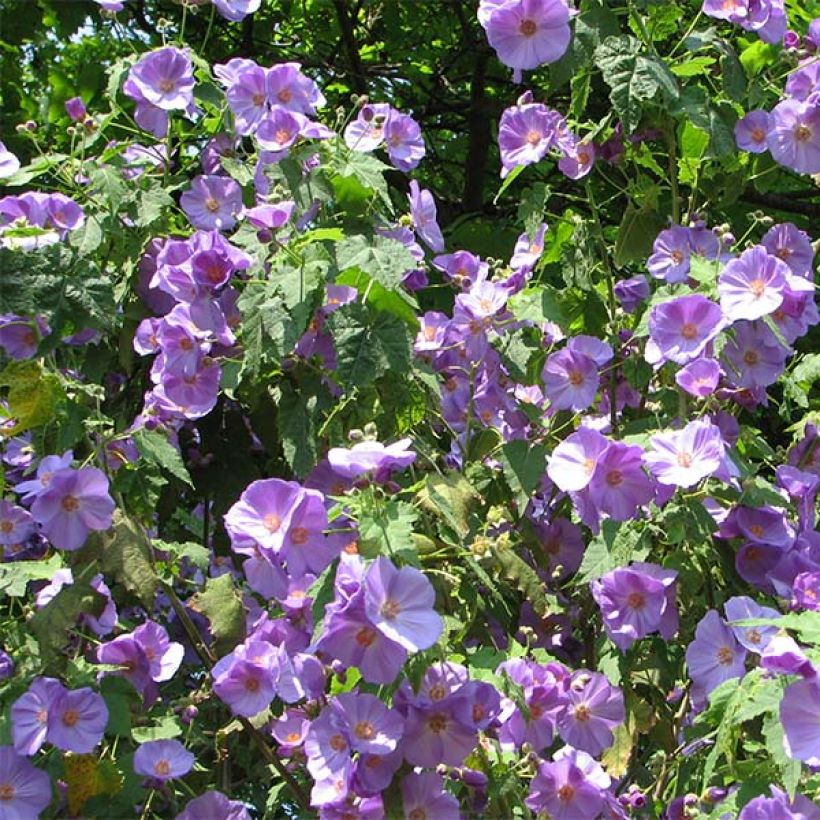

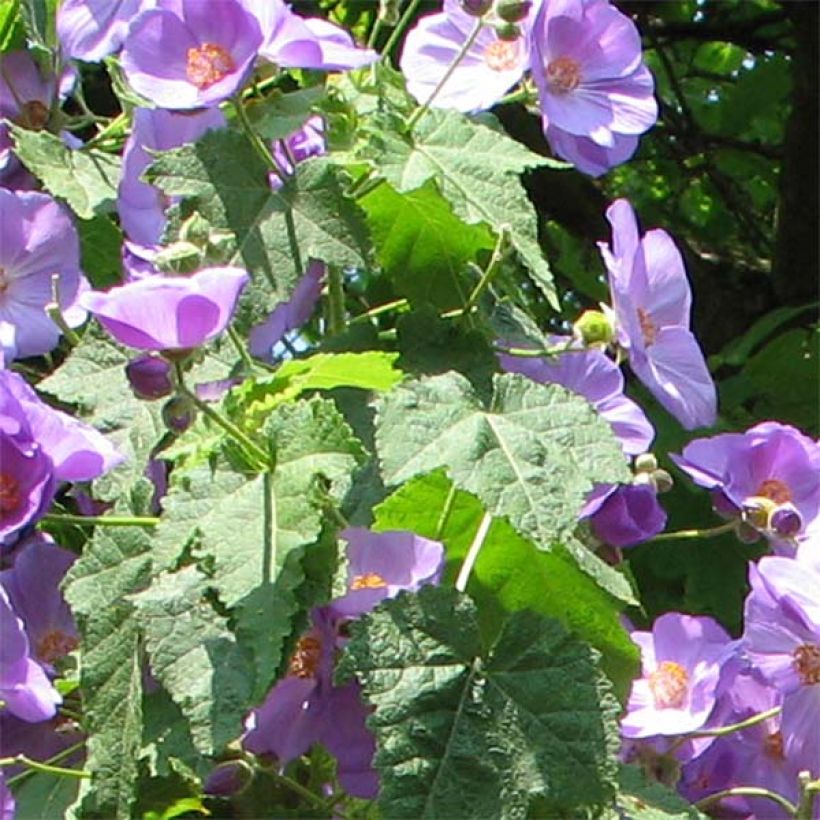

Plant habit
Flowering
Foliage
Botanical data
Abulilon
vitifolium x ochsenii
Suntense
Malvaceae
Gorer's mallow
Cultivar or hybrid
Other Abutilon
Planting and care
Plant Abutilon x suntense in spring or autumn, in a well-sheltered and sunny location in cool climates, or in partial shade in hot climates. Plant in a well-drained, loose, fertile soil. This abutilon tolerates the presence of limestone in the soil, and relative drought once well established. Dig a deep planting hole and add some garden soil, compost, and sand to improve soil quality if necessary. Water abundantly after planting and during the summer, especially in periods of high heat, for the first two years. Regularly remove faded flowers to prolong the lifespan of this bush, as it can die from producing too many seeds. Prune every year at the end of winter to maintain a more branching habit, and promote the appearance of flowering branches. The abutilon is susceptible to whiteflies, red spiders and scale insects, especially when grown in a greenhouse. It can easily be propagated by cuttings in spring or summer: take a stem with 5 buds. Insert the stem into potting soil, making sure to bury 3 buds and leave the top 2 exposed to air. Cuttings taken from the ends of the stems also root easily.
Container Culture:
Choose a large pot with drainage holes at the bottom, with a volume of 30 to 50 litres. Ensure good drainage by placing a 3cm (1.2in) layer of gravel, terracotta shards, or clay pellets at the bottom. Fill with a mixture consisting of half garden soil, a quarter leaf compost, and a quarter coarse sand. The potting medium should be rich in nutrients and kept moist throughout the growing season. Abutilon in pots requires more frequent watering during the hottest months, allowing the soil to slightly dry out between waterings, and regular feeding with flowering plant fertilizer from May to September. In winter, reduce watering and stop feeding. Store the plant in a bright, unheated, well-ventilated location, away from frost.
Planting period
Intended location
Care
-
, onOrder confirmed
Reply from on Promesse de fleurs
Hedge shrubs
Haven't found what you were looking for?
Hardiness is the lowest winter temperature a plant can endure without suffering serious damage or even dying. However, hardiness is affected by location (a sheltered area, such as a patio), protection (winter cover) and soil type (hardiness is improved by well-drained soil).

Photo Sharing Terms & Conditions
In order to encourage gardeners to interact and share their experiences, Promesse de fleurs offers various media enabling content to be uploaded onto its Site - in particular via the ‘Photo sharing’ module.
The User agrees to refrain from:
- Posting any content that is illegal, prejudicial, insulting, racist, inciteful to hatred, revisionist, contrary to public decency, that infringes on privacy or on the privacy rights of third parties, in particular the publicity rights of persons and goods, intellectual property rights, or the right to privacy.
- Submitting content on behalf of a third party;
- Impersonate the identity of a third party and/or publish any personal information about a third party;
In general, the User undertakes to refrain from any unethical behaviour.
All Content (in particular text, comments, files, images, photos, videos, creative works, etc.), which may be subject to property or intellectual property rights, image or other private rights, shall remain the property of the User, subject to the limited rights granted by the terms of the licence granted by Promesse de fleurs as stated below. Users are at liberty to publish or not to publish such Content on the Site, notably via the ‘Photo Sharing’ facility, and accept that this Content shall be made public and freely accessible, notably on the Internet.
Users further acknowledge, undertake to have ,and guarantee that they hold all necessary rights and permissions to publish such material on the Site, in particular with regard to the legislation in force pertaining to any privacy, property, intellectual property, image, or contractual rights, or rights of any other nature. By publishing such Content on the Site, Users acknowledge accepting full liability as publishers of the Content within the meaning of the law, and grant Promesse de fleurs, free of charge, an inclusive, worldwide licence for the said Content for the entire duration of its publication, including all reproduction, representation, up/downloading, displaying, performing, transmission, and storage rights.
Users also grant permission for their name to be linked to the Content and accept that this link may not always be made available.
By engaging in posting material, Users consent to their Content becoming automatically accessible on the Internet, in particular on other sites and/or blogs and/or web pages of the Promesse de fleurs site, including in particular social pages and the Promesse de fleurs catalogue.
Users may secure the removal of entrusted content free of charge by issuing a simple request via our contact form.
The flowering period indicated on our website applies to countries and regions located in USDA zone 8 (France, the United Kingdom, Ireland, the Netherlands, etc.)
It will vary according to where you live:
- In zones 9 to 10 (Italy, Spain, Greece, etc.), flowering will occur about 2 to 4 weeks earlier.
- In zones 6 to 7 (Germany, Poland, Slovenia, and lower mountainous regions), flowering will be delayed by 2 to 3 weeks.
- In zone 5 (Central Europe, Scandinavia), blooming will be delayed by 3 to 5 weeks.
In temperate climates, pruning of spring-flowering shrubs (forsythia, spireas, etc.) should be done just after flowering.
Pruning of summer-flowering shrubs (Indian Lilac, Perovskia, etc.) can be done in winter or spring.
In cold regions as well as with frost-sensitive plants, avoid pruning too early when severe frosts may still occur.
The planting period indicated on our website applies to countries and regions located in USDA zone 8 (France, United Kingdom, Ireland, Netherlands).
It will vary according to where you live:
- In Mediterranean zones (Marseille, Madrid, Milan, etc.), autumn and winter are the best planting periods.
- In continental zones (Strasbourg, Munich, Vienna, etc.), delay planting by 2 to 3 weeks in spring and bring it forward by 2 to 4 weeks in autumn.
- In mountainous regions (the Alps, Pyrenees, Carpathians, etc.), it is best to plant in late spring (May-June) or late summer (August-September).
The harvesting period indicated on our website applies to countries and regions in USDA zone 8 (France, England, Ireland, the Netherlands).
In colder areas (Scandinavia, Poland, Austria...) fruit and vegetable harvests are likely to be delayed by 3-4 weeks.
In warmer areas (Italy, Spain, Greece, etc.), harvesting will probably take place earlier, depending on weather conditions.
The sowing periods indicated on our website apply to countries and regions within USDA Zone 8 (France, UK, Ireland, Netherlands).
In colder areas (Scandinavia, Poland, Austria...), delay any outdoor sowing by 3-4 weeks, or sow under glass.
In warmer climes (Italy, Spain, Greece, etc.), bring outdoor sowing forward by a few weeks.

































